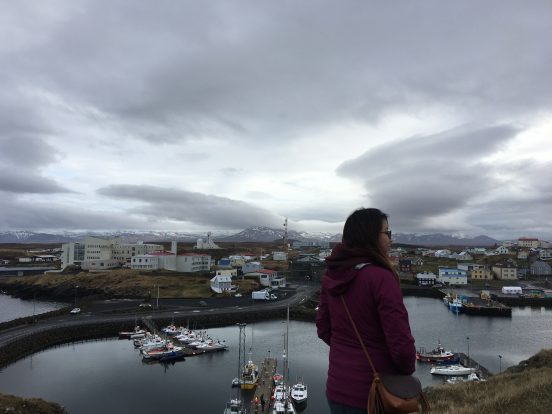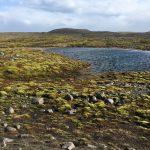Challenges and benefits brought by tourism has been a continuous theme throughout our trip around Iceland. We’ve seen instances where tourism has brought commercial success for businesses such as Blue Lagoon. We’ve also seen the pressure brought to smaller communities such as Stykishholmur. To ease this tension from the industry, some scholars have proposed to apply a slow and semi-wilderness approach for building infrastructure and tourism management. In this entry, I will be discussing the current tourism campaign Inspire Iceland, looking in depth into a slow and semi-wilderness tourism approach, and applying such policies to a small town such as Stykishholmur.
Following the eruption of Eyjafjallajökull in 2010, the tourism campaign Inspire by Icelandwas launched. Initially, no one thought a country covered in ash would attract tourists. However, many people wanted to experience the power of nature first hand. Hence, Iceland optimized this opportunity to their advantage. While the industry has been increasingly valuable for the country’s economy, the past and present management style says otherwise. The campaign is a reactionary approach, rather than a consistent meticulous effort. To put it simply, Inspired by Iceland advertises the country’s unique landscapes as the main point of attraction above all else. It is an ecotourism, nature-based tourism approach. As a result, 58% of visitors in the summer has reported “general interest in nature” as their reason for coming to Iceland (Óladóttir, 2015). The current state of tourism management style in Iceland is rather disassociated. Although the marketing campaign has proven to reach a large international audience, partly due to Icelandair’s participation, smaller municipalities have no obligation to abide to this national scheme. Their tourism marketing material are often privately funded and decided upon the local businesses. While this give municipalities more autonomy, it is not helpful for the Icelandic government to manage tourism on a national scale. More importantly, it is harder to monitor the movement of visitors where their large numbers could be putting pressure on local communities and fragile environments.
Therefore, I believe a move towards semi-wilderness and slow tourism for such locations would be most appropriate. This can allow tourist who are have a “purist” mindset to explore the landscapes freely. There has been a study conducted in the small area of Hùsadalur in Pórsmörk (Cságoly & others, 2017). It is located in the southern highlands made up of unbridged glacial rivers. The study was conducted under the contention whether more infrastructure is needed for the increasing tourism. There is a proposal for building more infrastructure in the area by adding bridges to allow ease of tourism. Contrary to my belief, the study found that most tourists are neutral in this project, given that there will be a balance between nature and urbanized environments(2017). Taking away from this case study and applying it to other similar communities, my ideal management style is that they should follow a similar approach. Instead of catering to large tourist groups, such as the Viking Sushi business in Stykishholmur, municipalities could focus on a better experience for “purist” travellers.

To understand this better, I will go further into the “purist” travellers I am referring to. In the study conducted on Hùsadalur, they used a system to categorize tourists into four groups, ranging from “strong purists, moderate purists, neutralists, and urbanists”(2017). This refers to the type of experience visitors expect to have when they visit Iceland. For those who visited Húsadalur, they were mainly male Europeans with overnight stays. The conditions which created this focused demographic is not a coincidence. As mentioned earlier, there are limited infrastructure and even transport means to reach this destination. The study concluded that infrastructure development is needed but should remain limited to protect the pristine wilderness experience, and to decrease attractiveness for tourists.
Using this approach for small towns such as Stykishholmur arises advantages and challenges. On the one hand, Stykishholmur is along the Ring Road. Viking Sushi is a popular business that is well developed and rooted in the town’s economy. This is reflected from the small vendors and hostels that spawned along the pier. On the other hand, the local population is 1100. Though there has been growth in the past 20 years, it is still a small town that operates on their own terms. If they are to reconsider their tourism management style to ease the number of visitors, the municipality could take charge in catering local activities to “purist” travellers instead. This could mean negotiating with Viking Sushi so they spread out their tours to nearby towns, limiting infrastructure development along the pier such as parking space for large tour buses, and restricting hotel sizes. While this might be controversial, I believe residents of the town should have the right to operate their town so that it serves the community rather than tourists.
Whatever the municipalities decide to operate their town is still up to them. However, my case study is to point out an alternative that could ease tourism in smaller communities who might not want as many tourists. I believe that opening the discussion not only between municipalities, but also on a national scale would help Iceland manage tourism in a sustainable way.
Bibliography
Cságoly, Zsófia, Anna Dóra Sæþórsdóttir, and Rannveig Ólafsdóttir. “Tourism Changing the Edge of the Wild.” Journal of Outdoor Recreation and Tourism17 (2017): 1-8. Accessed June 15, 2018. doi:10.1016/j.jort.2016.10.004.
Welling, Johannes T., and Edward H. Huijbens. “Slow Adventure in Iceland. Segmentation Study of Potential Inbound Visitors to Iceland.” Ásprent-Stíll and the ITRC, December 2016. Accessed June 15, 2018. Icelandic Tourism Research Centre.
ÓLADÓTTIR, ODDNÝ ÞÓRA. “Tourism in Iceland in Figures.” Ferðamálastofa. April 2015. Accessed June 17, 2018. https://www.ferdamalastofa.is/en/recearch-and-statistics/tourism-in-iceland-in-figures.

